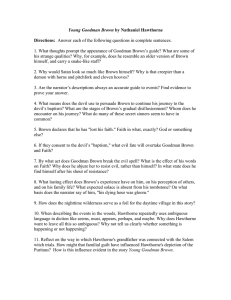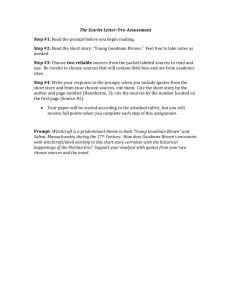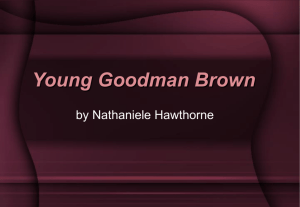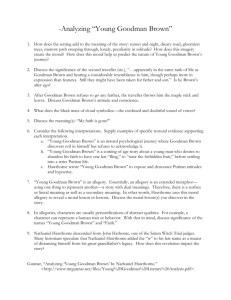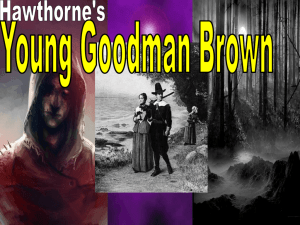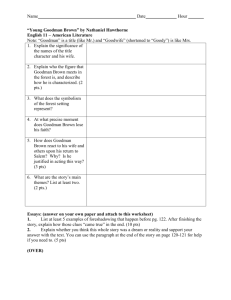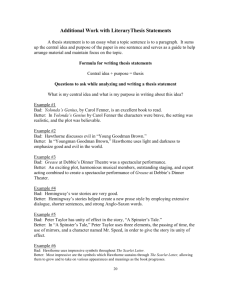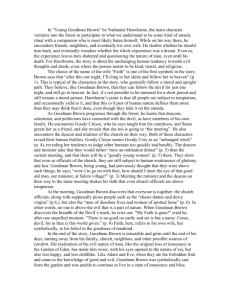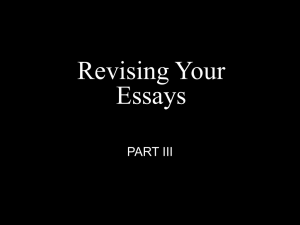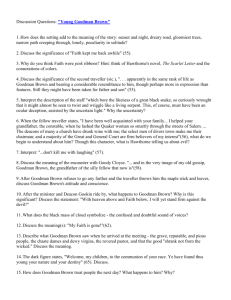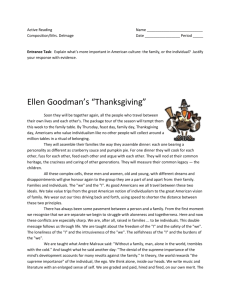Close reading and annotation
advertisement
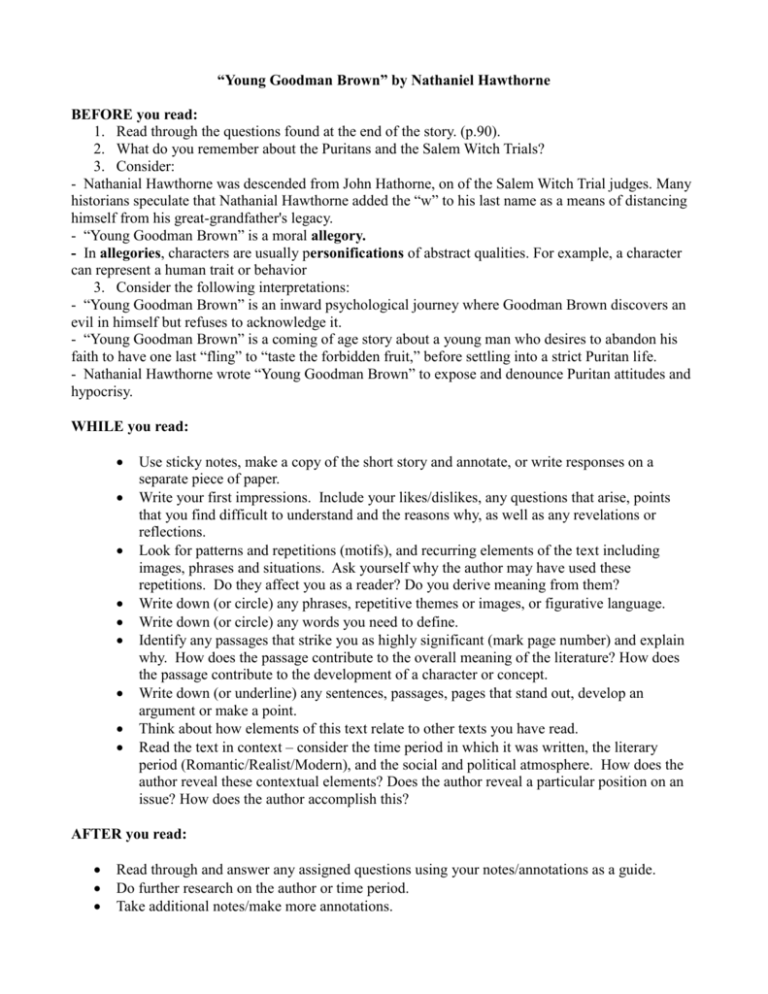
“Young Goodman Brown” by Nathaniel Hawthorne BEFORE you read: 1. Read through the questions found at the end of the story. (p.90). 2. What do you remember about the Puritans and the Salem Witch Trials? 3. Consider: - Nathanial Hawthorne was descended from John Hathorne, on of the Salem Witch Trial judges. Many historians speculate that Nathanial Hawthorne added the “w” to his last name as a means of distancing himself from his great-grandfather's legacy. - “Young Goodman Brown” is a moral allegory. - In allegories, characters are usually personifications of abstract qualities. For example, a character can represent a human trait or behavior 3. Consider the following interpretations: - “Young Goodman Brown” is an inward psychological journey where Goodman Brown discovers an evil in himself but refuses to acknowledge it. - “Young Goodman Brown” is a coming of age story about a young man who desires to abandon his faith to have one last “fling” to “taste the forbidden fruit,” before settling into a strict Puritan life. - Nathanial Hawthorne wrote “Young Goodman Brown” to expose and denounce Puritan attitudes and hypocrisy. WHILE you read: Use sticky notes, make a copy of the short story and annotate, or write responses on a separate piece of paper. Write your first impressions. Include your likes/dislikes, any questions that arise, points that you find difficult to understand and the reasons why, as well as any revelations or reflections. Look for patterns and repetitions (motifs), and recurring elements of the text including images, phrases and situations. Ask yourself why the author may have used these repetitions. Do they affect you as a reader? Do you derive meaning from them? Write down (or circle) any phrases, repetitive themes or images, or figurative language. Write down (or circle) any words you need to define. Identify any passages that strike you as highly significant (mark page number) and explain why. How does the passage contribute to the overall meaning of the literature? How does the passage contribute to the development of a character or concept. Write down (or underline) any sentences, passages, pages that stand out, develop an argument or make a point. Think about how elements of this text relate to other texts you have read. Read the text in context – consider the time period in which it was written, the literary period (Romantic/Realist/Modern), and the social and political atmosphere. How does the author reveal these contextual elements? Does the author reveal a particular position on an issue? How does the author accomplish this? AFTER you read: Read through and answer any assigned questions using your notes/annotations as a guide. Do further research on the author or time period. Take additional notes/make more annotations.
